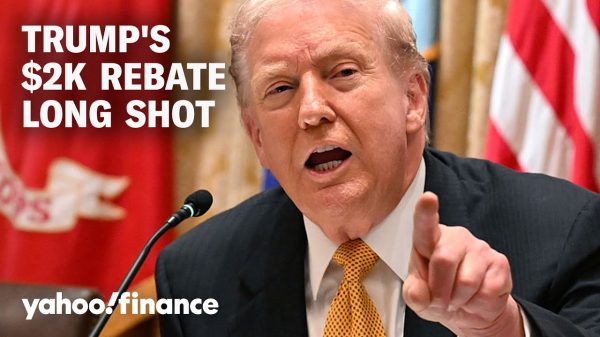Small-cap stocks — left behind by the 2023 U.S. stock-market rally led by technology stocks — are poised to play catch-up in the second half, shaking off worries about a regional banking crisis that threatened to rattle financial markets earlier this year.
“We think that if this rally actually has legs and broadens out, it’s going to be largely on the back of a strong labor market. If that indeed is the case, then I can see this rally broadening out even into smaller banks,” Kevin Nicholson, global fixed income chief investment officer at RiverFront Investment Group, told MarketWatch in a phone interview.
The small-cap benchmark Russell 2000
RUT,
was up 5.7% in the year to date through Tuesday’s close versus a 14% gain for the S&P 500 index
SPX,
and a nearly 30% rally for the tech-heavy Nasdaq Composite
COMP,
Outsize gains for around seven large capitalization tech stocks have accounted for most of the rally for the large-cap indexes, leaving most stocks behind. An equal weight measure of the S&P 500 was up just 3.2% for the year through Wednesday.
The Russell 2000 was down 7.6% from its early February high, after taking a tumble to its 2023 low in March as the collapse of Silicon Valley Bank and other regional lenders weighed on the index. Regional banks have bounced off their lows, but remain down sharply for the year, with the S&P SPDR Regional Banking ETF
KRE,
nursing a year-to-date loss of around 30% through Tuesday.
The Federal Reserve was set to release results of its stress tests on big banks later Wednesday, amid expectations they’re unlikely to ring major alarm bells. Worries linger over smaller, regional banks, but bullish small-cap investors think that the bloodbath went too far.
The KRE ETF sports a price-to-book ratio of 0.84 and a dividend yield of 3.77%, said Sandy Villere, portfolio manager at Villere & Co. in New Orleans. And its price-to-earnings ratio stands at 7.4 times, versus around 19 for the S&P 500.
While investors typically don’t want to own banks heading into a potential recession, the discount in regional banks is deep enough to offer a strong buying opportunity for investors with a time horizon of two to three years, Villere told MarketWatch.
That doesn’t mean all is well. Investors will need to pick and choose, Villere said, adding that he’ll be closely watching regional bank earnings beginning next month to see how deposits have held up at individual banks. Concerns about exposure to commercial real estate also linger, but are likely a problem for specific banks — likely those that now carry the steepest discount, he said.
For the broader market and economy, the regional bank troubles so far haven’t delivered the bite that many feared back in March. The collapse of SVB brought predictions of an imminent credit crunch that would accelerate the U.S. economy’s slide into recession.
Instead, the economy has proven resilient and the labor market robust, with investors and economists increasingly penciling in only a modest pullback — or none at all.
Need to Know: Biden is declaring victory on the economy. Wall Street is grudgingly coming around.
See: Here’s the bit of good news tucked behind a deeply inverted Treasury yield curve
Meanwhile, the Federal Reserve has indicated it intends to deliver another pair of quarter percentage point increases to the fed-funds rate and leave it elevated as it continues its effort to bring down inflation. Elevated rates are typically a positive for banks, who see their net interest margins increase, noted RiverFront’s Nicholson. Meanwhile, small-cap industrials should benefit from the resilience of the economy.
As the March bank woes fade into the rearview mirror, “the better likelihood banks will be able to take advantage of the interest-rate environment,” he said, arguing that problems in the industry were concentrated in a handful of “very specialized cases.”
Financial markets are comfortable with the Fed’s signal that another rate hike or two is in the pipeline, Nicholson said. Data or Fedspeak that signals policy makers will need to be even more aggressive could be a problem for the outlook though.
Villere said he still expects a recession, noting market indicators, including a deeply inverted Treasury yield curve, have offered reliable warnings of a pullback, but he expects any downturn, possibly in the fall, to be shallow and short-lived.
Small-caps, which are sensitive to economic cycles, typically see some of their best performance coming out of recession. And the market appears to have already priced in a small pullback, which means small-caps may be due for a “day in the sun,” Villere said.
Read the full article here









